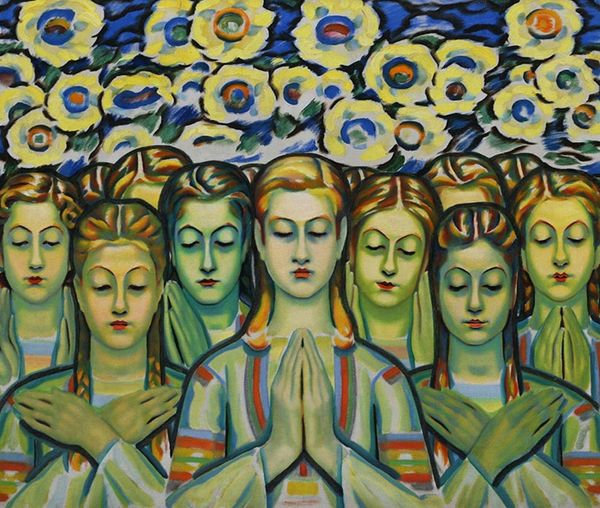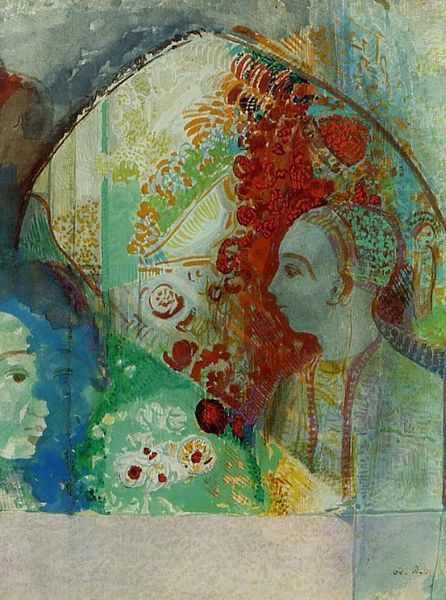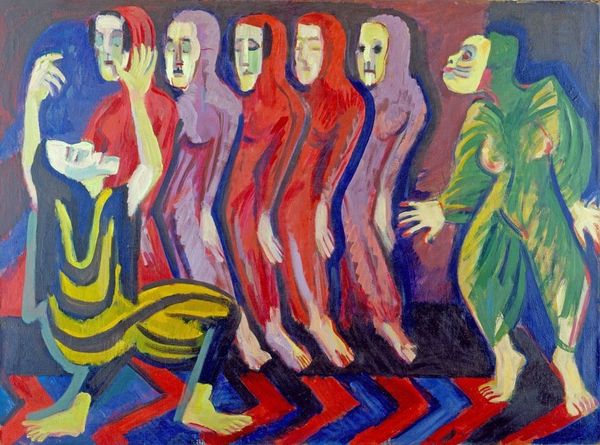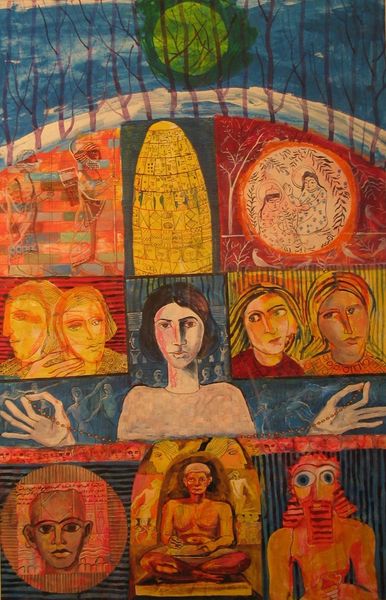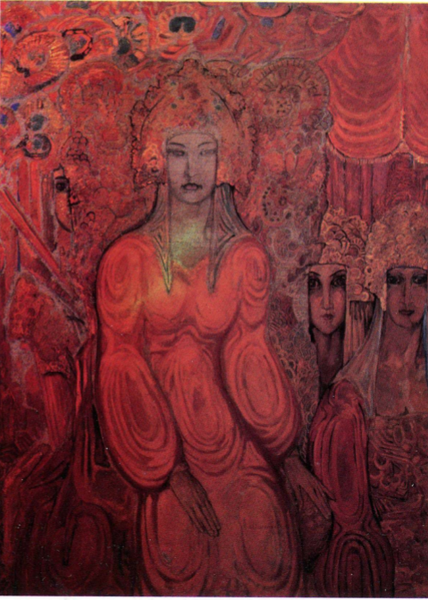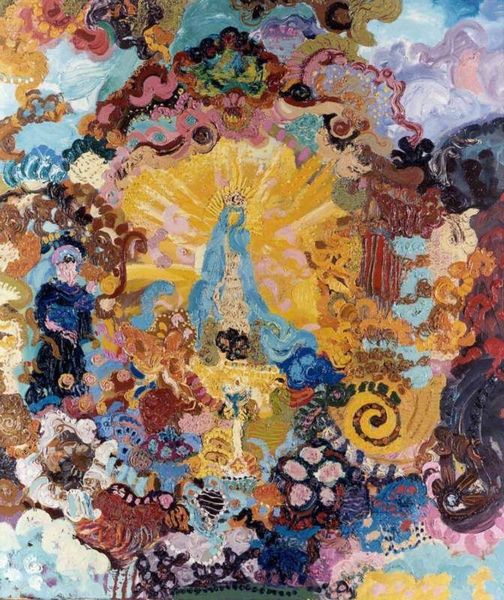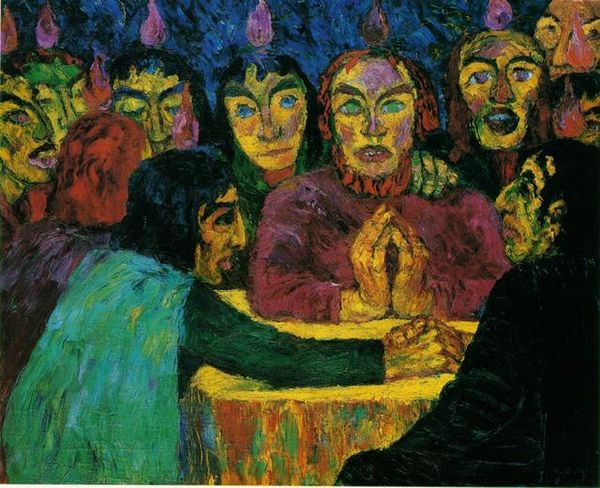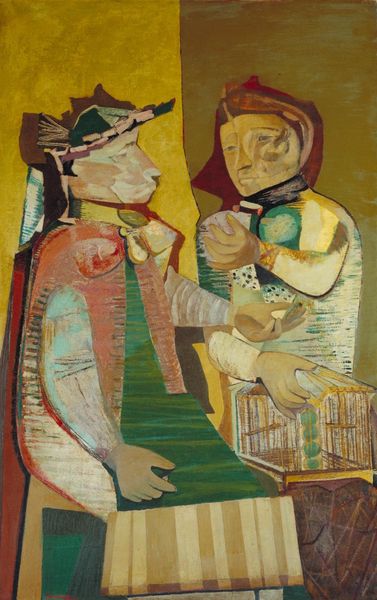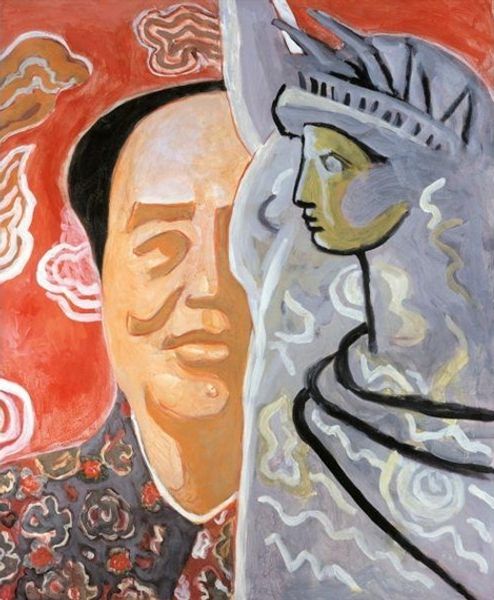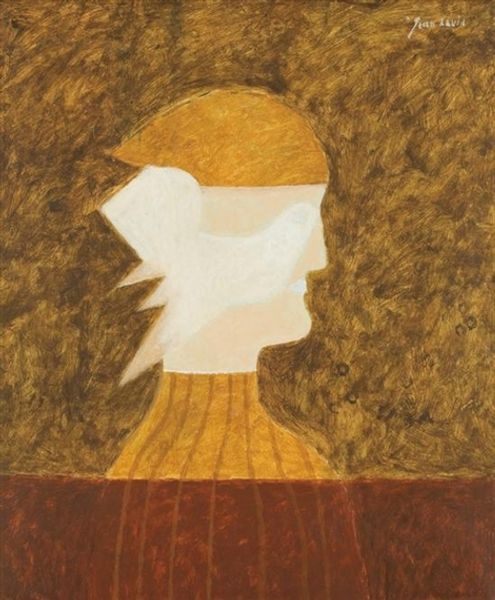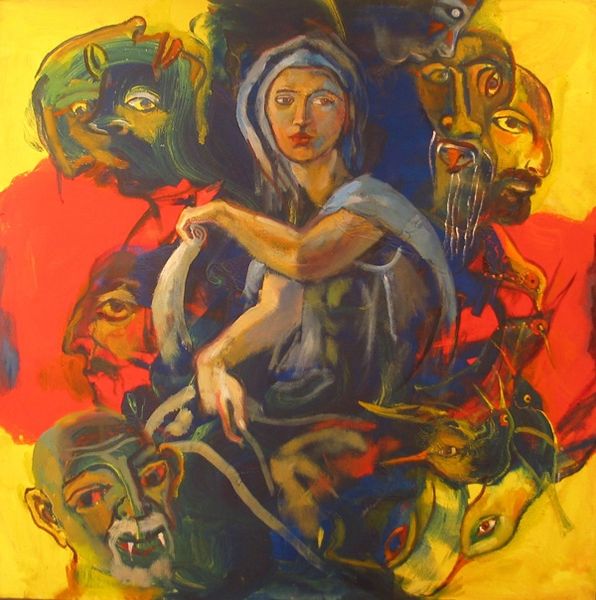
painting, oil-paint
#
portrait
#
painting
#
oil-paint
#
figuration
#
oil painting
#
group-portraits
#
expressionism
#
genre-painting
#
expressionist
Copyright: Vladimir Dimitrov,Fair Use
Curator: Here we have Vladimir Dimitrov’s painting, "Harvester Women." What strikes you first? Editor: There's an undeniable sense of community. All the women appear together, yet the figure in the front projects a more stoic, solemn affect than the others. Curator: Dimitrov, a key figure in Bulgarian art, often depicted rural life and collective identity. Consider how genre painting in Bulgaria and elsewhere played a part in solidifying notions of nationhood. Editor: Exactly! The composition isn’t accidental; there’s a purpose. The women's attire is traditional; these vibrant horizontal stripes reinforce group unity but maybe speak to imposed standards too. Who determined these uniforms? Is there room for individual expression within that group identity? Curator: An interesting consideration, the individual within the collective. Dimitrov’s artistic practice aligns with a socialist realist aesthetic. These depictions can contribute to building collective identities. Editor: Absolutely, this aesthetic promotes the figure of the productive citizen, but in looking at women, how does it deal with gender expectations, family responsibilities, labor? Curator: These women seem frozen, caught in an ambiguous act, their movement restrained; It feels more celebratory than laborious. The expressions, those fixed gazes, they almost undermine any sense of gritty realism. The artist chooses to offer these women as symbols instead. Editor: True. And those symbolic white floral blooms above feel… discordant. It’s the way they’re presented almost floating overhead. How much of that dissonance reflects social commentary? Are they hovering benevolently or mockingly? Curator: The roses add a dreamlike quality, I think they invite the viewer to move away from historical accuracy to see Dimitrov’s perspective on a world he understands and wants to immortalize. Editor: And maybe this piece captures the state's desired projection of that reality. Seeing it today, understanding its roots, pushes us to analyze the image, instead of just accepting what is portrayed. Curator: The painting becomes a cultural artifact with layers of interpretations then. It tells a story not just about the subject but about the social and political forces at play during its creation. Editor: Agreed. And a crucial prompt to unpack those layers, question those forces, and acknowledge the people who navigated that reality.
Comments
No comments
Be the first to comment and join the conversation on the ultimate creative platform.
